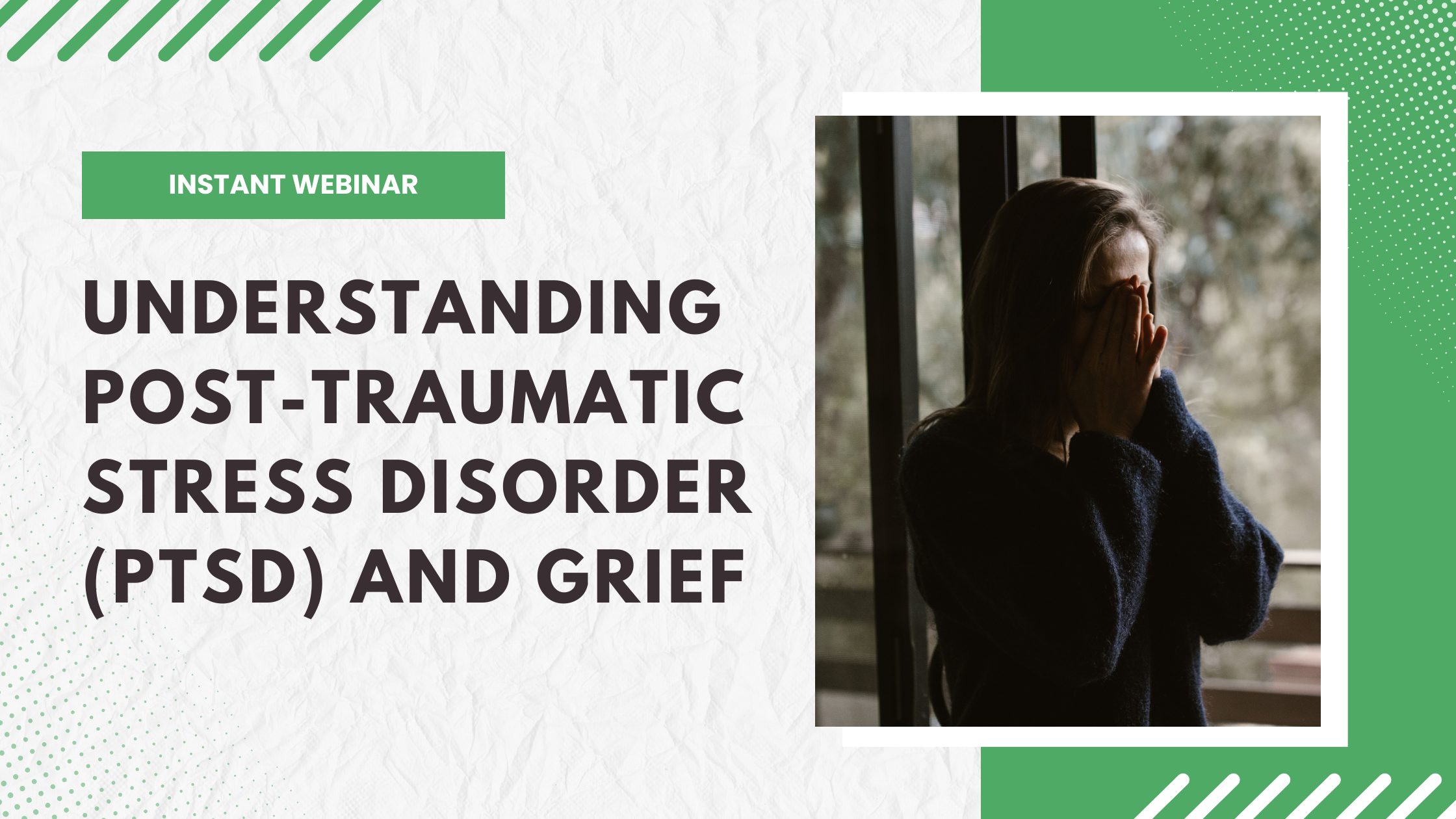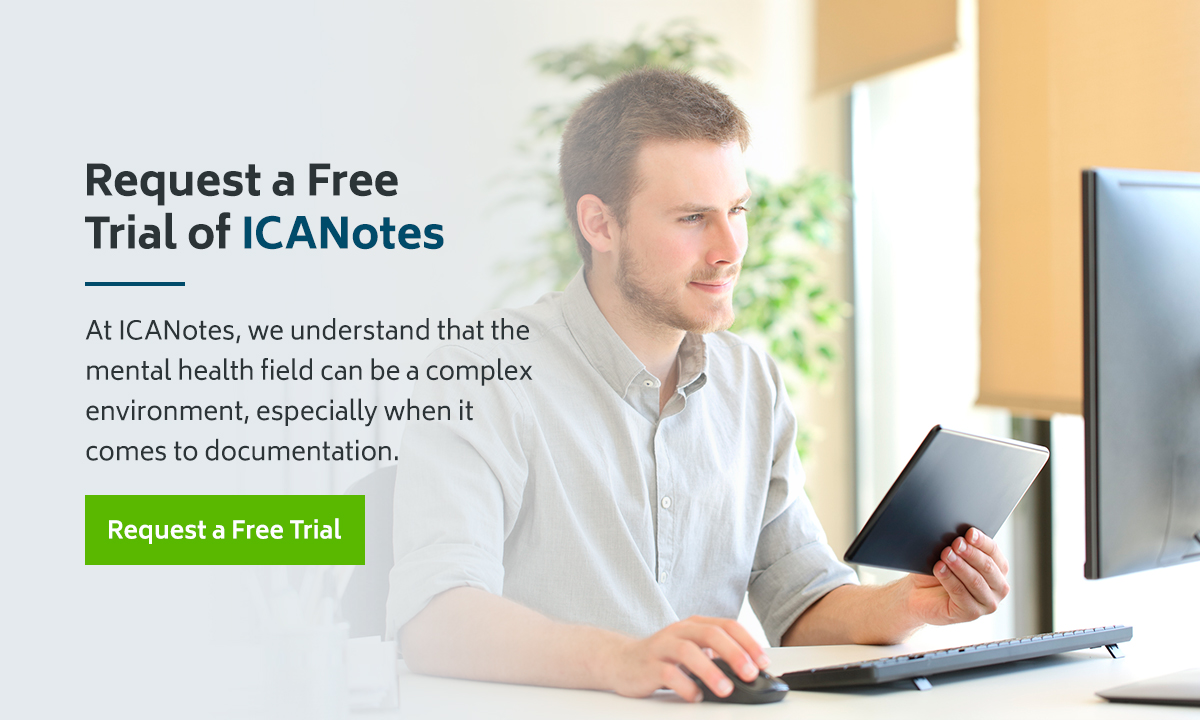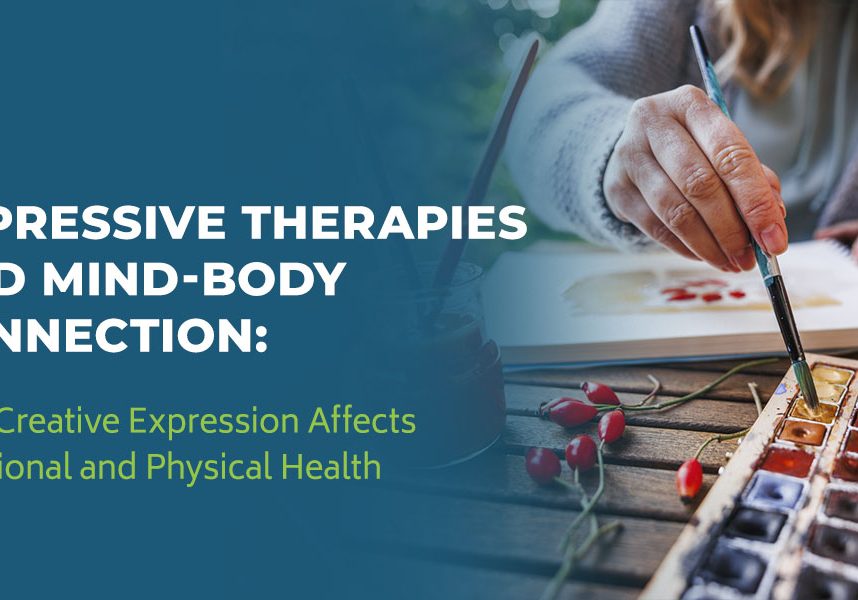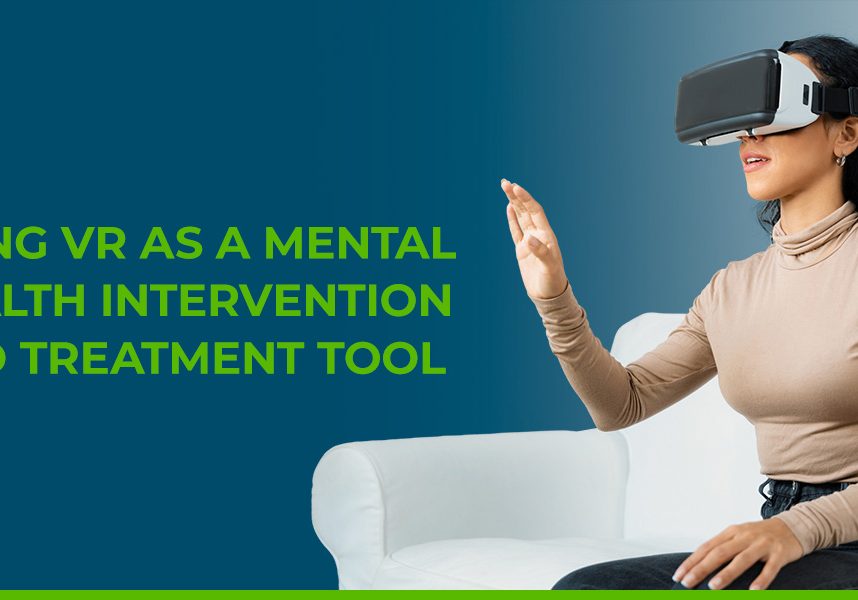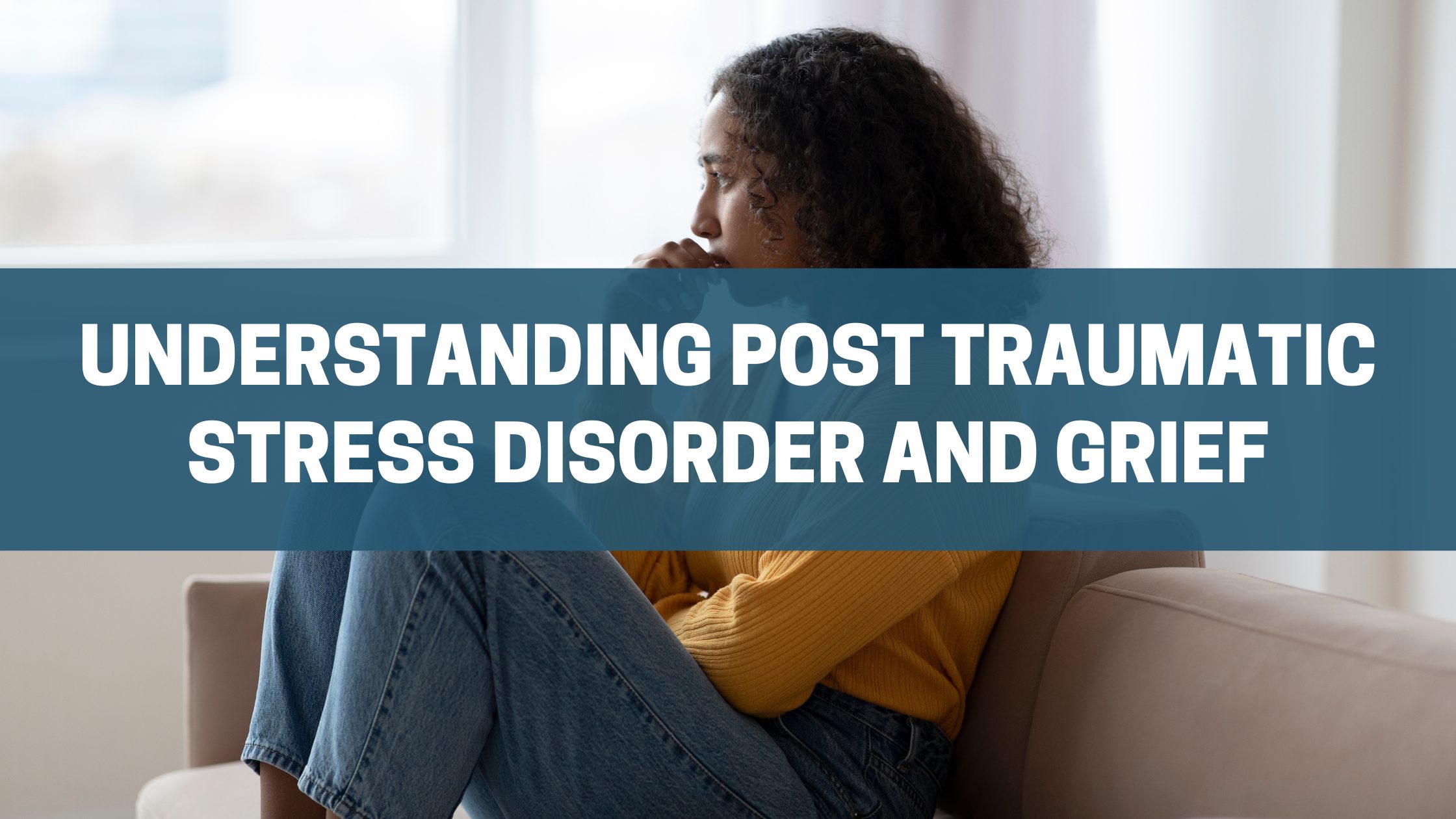
Understanding Post Traumatic Stress Disorder and Grief
Post Traumatic Stress Disorder and Grief are individually complex experiences that can be manifest jointly when the right circumstances are present. Each experience is highly individualized, developing as a result of a myriad of factors which we will discuss in this article. While these two experiences may share some signs and symptoms, there are clear differentiators clinicians must keep in mind in order to avoid misdiagnosis and ineffective treatment interventions.
Defining Post Traumatic Stress Disorder and Grief
What is Post Traumatic Stress Disorder (PTSD)?
PTSD is a disorder associated with a person’s reaction to experiencing or witnessing what they perceive to be a terrifying event. When breaking down the word “Post-Traumatic”, we can assert that this disorder occurs after the event has occurred and can persist for months and even years depending on an individual’s temperament and resiliency, access to formal trauma-focused therapy and other professional intervention, and their natural support systems for long term support.
Key PTSD Symptoms
Two key symptoms of PTSD are hyperarousal and intrusive thoughts [1]. An individual with PTSD will experience hyperarousal which feels like tension and a high startle response causing seemingly meaningless experiences like car backfiring, people yelling, or any other sudden unexpected noises to be unbearable. Intrusive thoughts related to the traumatic experience are also common. This manifests through flashbacks, nightmares, and sometimes even psychosomatic responses such as sweating, nausea, and trembling.
Key PTSD Symptoms
-
Re-experiencing the traumatic experience
- Flashbacks
- Nightmares
- Repetitive Images
- Physical Sensations like sweating, pain, or trembling
-
Situational Avoidance
- Avoiding thoughts, feelings, places, and people that trigger reminders of the traumatic event
-
Arousal and Reactivity
- Irritability and angry or aggressive outbursts
- Feeling tense or “on guard”
- Difficulty sleeping or staying asleep
-
Cognition and Mood
- Difficulty concentrating
- Having trouble remembering key elements of the traumatic event
- Feeling anger, guilt, or shame
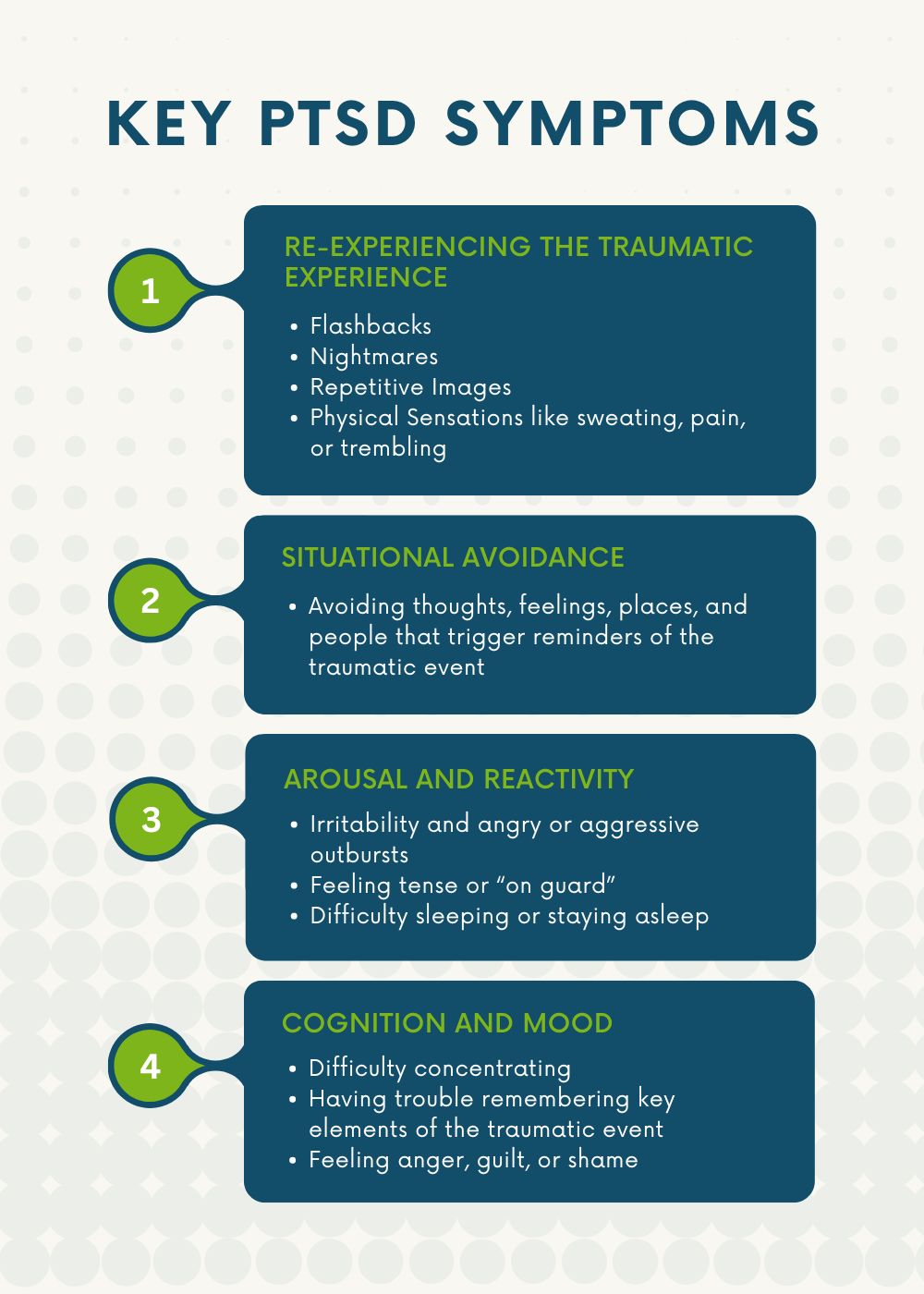
Common Causes of PTSD
An essential feature of PTSD is the precipitating event that causes the disorder. In order for an individual to be diagnosed with PTSD, they must have experienced or witnessed a traumatic event. However, what is perceived as “traumatic” varies from person to person. This means that one person’s experience of an event may result in PTSD, while another person’s experience may not.
PTSD Effects on the Brain
PTSD is a reaction to trauma with persistent, distressing symptoms. The essential component is hearing about, witnessing, or experiencing a deeply traumatic event. In fact, brain imaging shows that PTSD can cause changes to an individual’s brain structure, affecting areas of the brain that impact memory, emotion, and decision making [2].
What is Grief?
Grief is a natural, normal experience individuals feel as a result of a loss, either through death or life circumstances. Grief is the internal reaction to loss which includes thoughts and feelings, whereas, mourning is the outward expression of grief. Grief is a universal experience that every individual will have as a result of loving or caring deeply for someone or something.
Key Features of Grief
Interestingly, because grief is such an individual experience, mental health professionals have not been able to add general grief to the Diagnostic and Statistical Manual for Mental Disorders. Additionally, it has not been added due to the lack of characterization as a “mental disorder”. Rather, grief is an expected experience for an individual to have following a loss. Common key features can include but are not limited to sadness, longing, anger, difficulty sleeping, and disbelief.
Grief Symptoms
-
Physical
- Appetite changes, lack of appetite or over appetite
- Lethargy, feeling tired and weak
- Trouble sleeping
- Grief fog or grief brain
-
Emotional
- Shock and disbelief related to the loss
- Anger toward self, deceased, care team, God, etc.
- Sadness, depression and longing for the deceased
Common Causes of Grief
Grief is most commonly associated with a loss through death, however more recently, attention is being paid to losses outside of death which can include the end of a relationship, job loss, infertility and pregnancy loss, diagnosis of chronic or life-limiting illness, and so much more. When grief is expanded to losses across the lifespan, grief can be recognized within many experiences, including positive ones which are often associated with the term “bittersweet.” To encompass this expanded version of grief, we define grief as “the internal feeling of loss experienced when something that has been lost or anything that has been taken from a person.”
Grief Effects on the Brain
Grief, however, is a natural response to loss. Individuals who share connection to the world around them are bound to grieve at least one time in their life. While the symptoms of grief are to be expected, there are slight changes to the brain that have been shown through neuropsychological testing which includes the phenomenon known as “brain fog” or “grief brain” [3]. This experience, often reported by grievers, can be incredibly alarming. Grief fog encompasses difficulty thinking clearly, remembering, concentrating, and making decisions. This phenomenon manifests in the days and weeks following the loss.
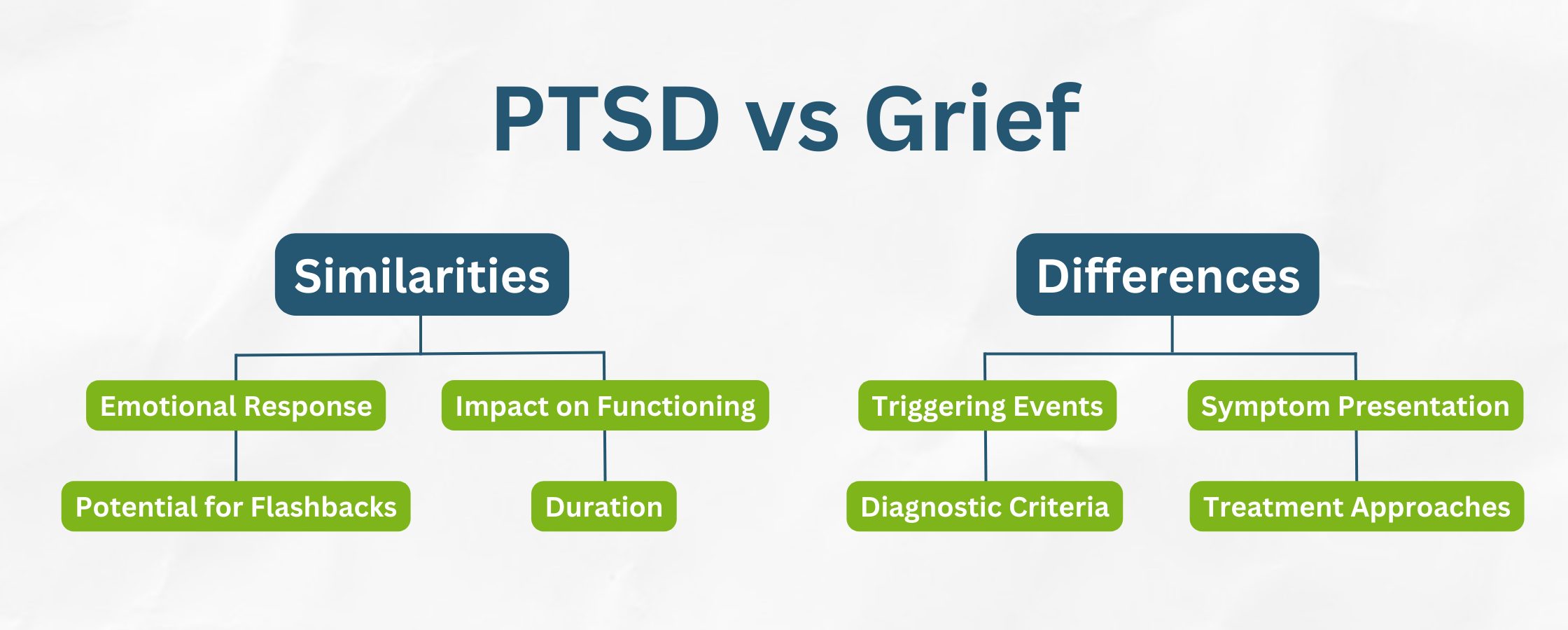
Similarities and Differences between Grief and PTSD
Clinicians who work with populations in grief may likely see individuals who are also experiencing PTSD, and vice versa. Often these two experiences go hand in hand, however they are not mutually exclusive. When we break down each experience, we can see how the two may overlap, but differences can be identified from onset to treatment.
PTSD vs Grief
Similarities
Emotional Response
Impact on Functioning
Potential for Flashbacks
Duration
Differences
Triggering Events
Symptom Presentation
Diagnostic Criteria
Treatment Approaches
As previously stated, grief and PTSD share some symptoms that may present similarly, particularly around emotional responses, impact on daily life and functioning, and triggers.
Emotional Responses that can be attributed to both grief and PTSD include:
- Sadness
- Anger
- Anxiety
Impact on daily life can be witnessed in both grief and PTSD through difficulty functioning normally due to:
- Lethargy and low energy
- Exposure to triggers
Both grief and PTSD can be triggered by reminders including:
- Places
- Dates
- Events
On-Demand Webinar: PTSD and Grief
This webinar illuminates the nuances of PTSD and grief, helping you recognize, differentiate, and approach these conditions with empathy and knowledge.
Assessment of Post Traumatic Stress Disorder and Grief
Proper assessment of both PTSD and grief is essential for clinicians to differentiate the two experiences in order to deliver proper care. Assessment tools can be utilized alongside a formal assessment to create a comprehensive picture of an individual’s lived experience.
The following tools for both PTSD and grief should be selected based on the individuality of each client:
Assessment Tools for PTSD
- PTSD Checklist for DSM-5 (PCL-5)
- Clinician-Administered PTSD Scale for DSM-5 (CAPS-5)
- PTSD Symptom Scale Interview (PSS-I and PSS-I-5)
- Structured Clinical Interview; PTSD Module (SCID PTSD Module)
- Treatment-Outcome Post Traumatic Stress Disorder Scale (TOP-8 Scale)
Assessment Tools for Grief
- Grief Response Scale (GRS)
- Inventory of Complicated Grief (ICG)
- Persistent Complex Bereavement Inventory (Core Grief Scale)
- Brief Grief Questionnaire (BGQ)
- Grief Impairment Scale
Treating Grief and PTSD
While grief and PTSD share similarities, treatment for each is vastly different. Below is an outline of treatment modalities that best fit grief and PTSD separately:
PTSD Treatment Approaches
- Psychotherapy
- Cognitive Behavioral Therapy
- EMDR
- Medications (e.g., SSRIs, SNRIs).
- Emerging therapies (e.g., virtual reality exposure therapy).
Grief Treatment Approaches
- Grief counseling and support groups.
- Cognitive Behavioral Therapy for grief.
- Medications for associated symptoms (e.g., antidepressants if needed).
Individuals experiencing both post traumatic stress disorder and grief concurrently require a highly individualized, integrated approach. In many cases, it is essential to identify which symptoms are most present for the individual, and work from the highest priority to lowest, rather than attempting to address all symptoms related to both conditions simultaneously. Often the most presenting issue within PTSD presents barriers to an individual having space for processing grief until the acute PTSD symptoms are managed.
Additionally, the co-occurrence of both experiences requires clinicians to remain flexible throughout the treatment process, allowing for frequent shifts in areas of highest need and focus for a client [3]. There may be days when grief rises to the surface and needs immediate attention, and vice versa. For this reason, tuning into the individual during each session and addressing the area of highest concern should take precedence over a rigid treatment plan.
ICANotes for Documentation
Our integrated electronic assessments for PTSD and grief can help with the complexity in identifying, assessing, and treating both post traumatic stress disorder and grief. It is essential to maintain accurate documentation that is customizable to each client. With the right documentation tools from ICANotes, you can create unique progress notes quickly and effectively after every session – ensuring you’re prepared, organized and ready to best help your client at their next session.
Outside of helping you create progress notes, ICANotes behavioral health software makes it easy to improve compliance and bill more effectively, ensuring you get to spend focused, ample, and productive time with your patients. Schedule a demo today or start your free trial to see how ICANotes can support you in providing the most effective, high quality care possible.
About the Author

Kaylee, a certified grief counselor and social worker, has dedicated the past decade to reshaping our understanding and support of grief. With experience at a nonprofit hospice, she's empowered individuals to navigate their grief journeys, recognizing that loss extends beyond death. As an author, speaker, and event organizer, Kaylee fosters spaces for acknowledging and embracing life's most challenging moments. Her work has been featured across various media, amplifying voices and broadening awareness of the diverse sources of grief in our lives.
Recent Posts
Sources
- https://www.nhs.uk/mental-health/conditions/post-traumatic-stress-disorder-ptsd/symptoms/#:~:text=Re%2Dexperiencing%20is%20the%20most,Avoidance%20and%20emotional%20numbing
- https://www.ncbi.nlm.nih.gov/pmc/articles/PMC3181836/#:~:text=Brain%20areas%20implicated%20in%20the,medial%20prefrontal/anterior%20cingulate%20function.
- https://www.ncbi.nlm.nih.gov/pmc/articles/PMC6844541/#:~:text=Neuropsychological%20testing%20demonstrated%20that%20participants%20with%20complicated,volume%2C%20for%20both%20white%20matter%20and%20gray

